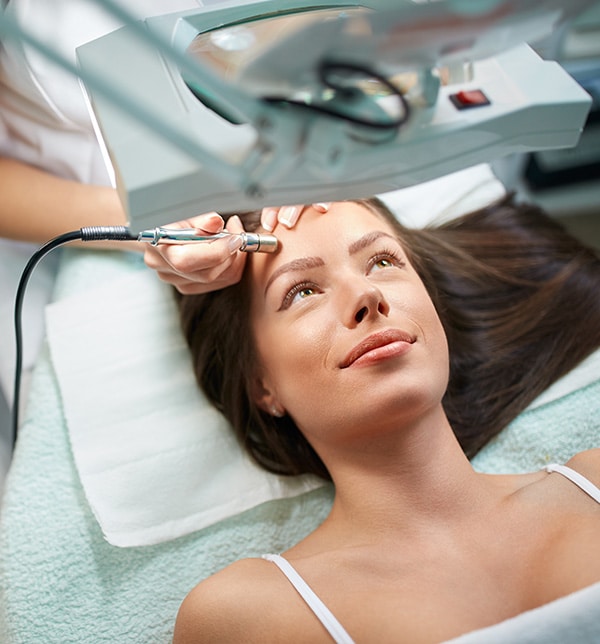The Duty of a Dermatologist in Diagnosing and Treating Numerous Skin Problems
The role of a dermatologist expands much past fundamental skin treatment; it includes the elaborate procedures of identifying and treating a wide array of skin disorders. Via their specialized training, skin doctors use sophisticated diagnostic techniques to identify problems such as acne, psoriasis, and eczema, tailoring therapy strategies to meet individual client needs. However, the intricacy of skin conditions typically requires a diverse strategy that includes not only clinical interventions but additionally individual education and learning and preventative approaches. What effects does this extensive treatment have for client outcomes and total skin health?
Relevance of Dermatological Experience
The knowledge of skin doctors is crucial in the diagnosis and monitoring of skin disorders, as they possess specialized understanding that expands past basic medical training. This advanced understanding is vital for properly determining a large range of skin problem, which frequently provide with overlapping signs that can puzzle non-specialist experts. Skin doctors are educated to distinguish between different skin conditions, making sure proper treatment plans are executed quickly.
Furthermore, the area of dermatology incorporates an one-of-a-kind mix of scientific abilities and innovative innovation. Skin specialists use advanced analysis tools, such as dermatoscopes and skin biopsies, to assess skin sores and identify their nature. This technological proficiency permits very early discovery of potentially severe problems, including skin cancers, which can significantly boost person results.

Usual Skin Problems Detected
Various skin disorders can offer with varying degrees of extent and complexity, making skin-related experience crucial for precise diagnosis and monitoring. Among one of the most common conditions are acne vulgaris, dermatitis, dermatitis, and psoriasis.
Acne vulgaris, defined by the visibility of comedones, papules, and pustules, mainly influences teens but can persist right into the adult years. Eczema, or atopic dermatitis, is a chronic inflammatory condition that causes completely dry, scratchy, and inflamed skin. Psoriasis is an autoimmune disorder that materializes as red, flaky plaques, largely on extensor surfaces, and can substantially influence the top quality of life.
Various other common disorders include rosacea, which provides with facial flushing and visible capillary, and seborrheic dermatitis, commonly resulting in dandruff and oily patches on the scalp. Fungal infections, such as tinea pedis (athlete's foot) and tinea corporis (ringworm), are likewise often run into.
These varied conditions call for a thorough understanding of pathophysiology, along with understanding of restorative choices, to assist reliable therapy methods - Dermatologist Raleigh NC. With precise diagnosis, dermatologists can offer tailored management strategies that resolve both the signs and symptoms and underlying reasons for these typical skin conditions
Diagnostic Techniques Utilized
Just how do skin doctors precisely identify various skin disorders? Skin doctors utilize a combination of clinical evaluations, analysis tools, and specialized methods to guarantee precise recognition of skin disease. The initial action commonly includes an extensive medical background and health examination. Throughout this process, dermatologists analyze the individual's signs, start, period, and any possible triggers.
One of the main analysis methods is dermoscopy, which makes use of a handheld tool to magnify skin lesions, enabling comprehensive examination of structures not noticeable to the naked eye. Furthermore, skin biopsies are often performed, where a tiny sample of skin is eliminated try here for histopathological evaluation. This technique is vital for diagnosing conditions such as cancer malignancy and other skin cancers.
Spot screening is another vital approach employed to identify get in touch with dermatitis by exposing little amounts of prospective irritants to the skin. Moreover, research laboratory tests, including blood tests and cultures, might be conducted to rule out systemic problems or infections. Jointly, these analysis strategies permit dermatologists to formulate an extensive understanding of skin conditions, causing exact medical diagnoses and educated person administration.

Therapy Alternatives Available
A broad variety of therapy options is available for managing skin conditions, customized to the details condition and individual patient requirements. Skin specialists use both systemic and topical treatments, depending on the seriousness and sort of skin disorder. Topical treatments, such as corticosteroids, retinoids, and calcineurin inhibitors, are typically recommended for conditions like psoriasis, acne, and eczema. These agents target inflammation and promote skin healing.
For much more severe problems, systemic therapies might be required. These include dental medications such as antibiotics for microbial infections and immunosuppressants for autoimmune problems. Biologics, a more recent class of drugs, have actually revealed effectiveness in treating persistent inflammatory conditions like psoriasis and atopic dermatitis.
In addition to pharmacologic interventions, dermatologists may advise procedural options such as laser photo-therapy, therapy, or chemical peels (Dermatologist Raleigh NC). These treatments can deal with pigmentation concerns, acne scarring, and other skin abnormalities successfully
Furthermore, way of living adjustments, including correct skin care routines and sunlight security, play a vital role in the total administration of skin problems. By incorporating these treatment methods, skin specialists intend to improve person results and enhance high quality of life for those influenced by skin problem.
Patient Education And Learning and Support
Empowerment with expertise is essential in the monitoring of skin disorders, as patient education and learning and assistance substantially affect treatment results. Skin doctors play a critical duty in providing individuals with thorough details about their problems, therapy options, and self-care techniques. Reliable interaction fosters a collective setting where patients can actively join their very own care.

Assistance expands past education and learning; it encompasses psychological confidence and continuous support. Skin doctors ought to create a secure room for people to share their problems and ask concerns. Resources such as informative pamphlets, web sites, and support groups can even more encourage clients, enabling them to get in touch with others facing comparable obstacles.
Eventually, a knowledgeable patient is most likely to participate in their therapy trip, resulting in better adherence, contentment, and enhanced health results. The dermatologist's duty in person education and assistance is basic to maximizing the monitoring of skin disorders.
Verdict
To conclude, skin specialists play a necessary function in the reliable diagnosis and therapy of a variety of skin disorders. Their specific knowledge, incorporated with sophisticated diagnostic techniques and tailored therapy plans, ensures detailed take care of individuals. Moreover, the emphasis on person education and learning fosters proactive monitoring of skin that site health, equipping people to take informed activities regarding their skin care regimens. The contributions of dermatologists dramatically improve the quality of life for those impacted by skin disease.
The duty of a skin doctor expands much past fundamental skin treatment; it incorporates the complex procedures of identifying and dealing with a broad variety of skin conditions. Dermatologists use innovative analysis devices, such as dermatoscopes and skin biopsies, to examine skin sores and establish their nature. Inevitably, the specialized training and experience of skin specialists are essential in supplying extensive treatment for people with skin problems.
In addition, skin biopsies are frequently carried out, in which a little sample of skin is gotten rid of for histopathological evaluation. Jointly, these analysis techniques allow skin doctors to develop a comprehensive understanding of skin disorders, leading to accurate medical diagnoses and notified client monitoring.